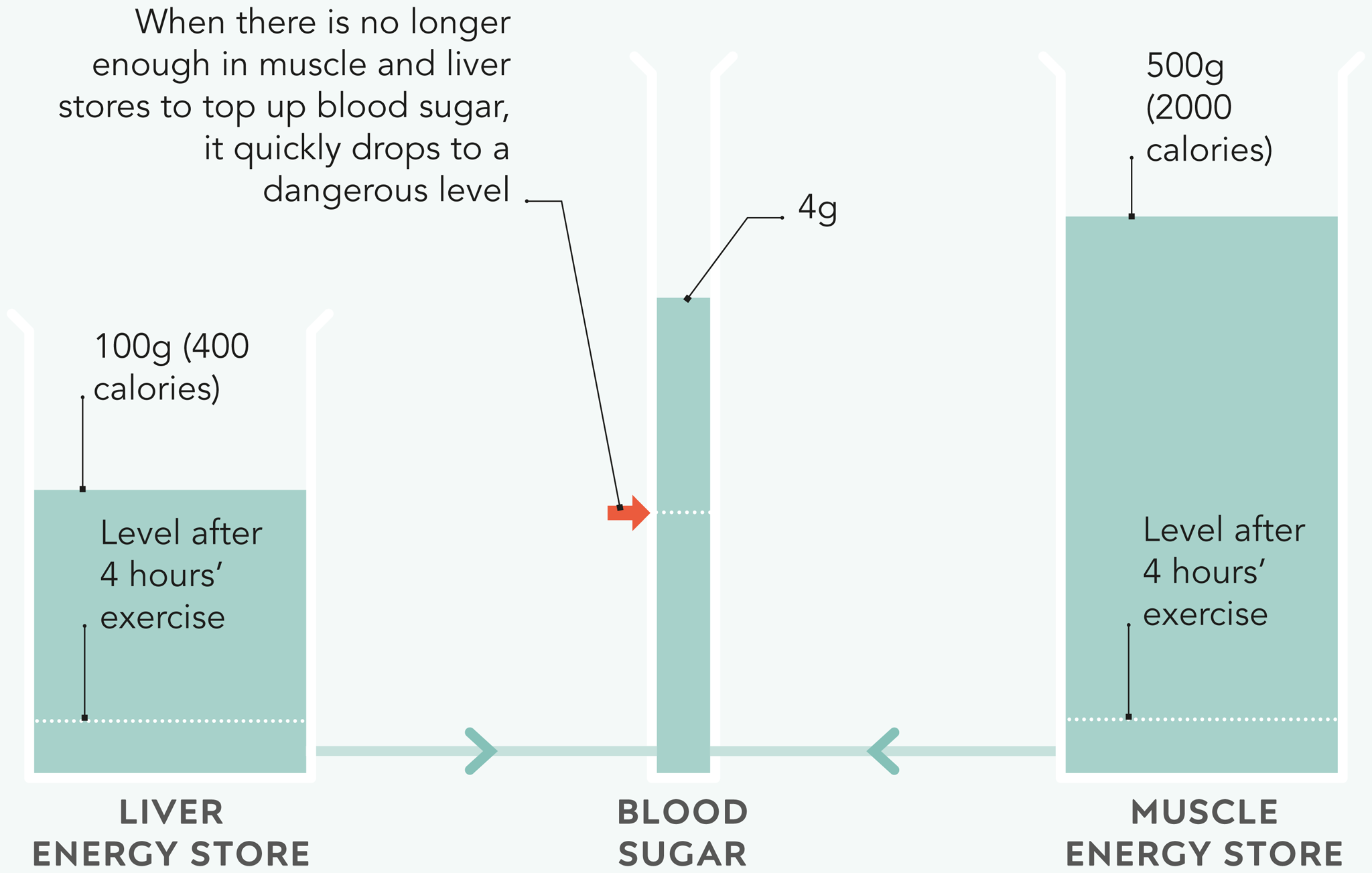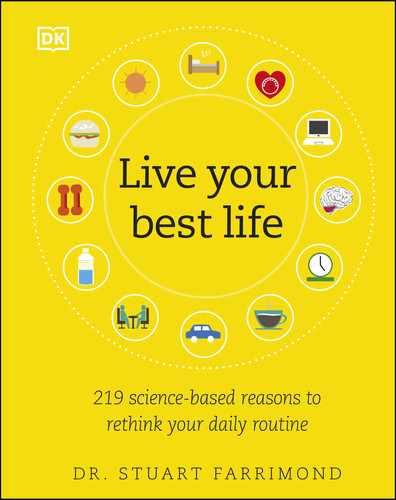How Do I Avoid “Hitting the Wall”?
Exercise should be one of life’s great pleasures. Finding a balance between challenging your body to perform better and pushing too hard can be tricky.
Every one of your body’s tissues and organs gets the energy it needs by burning glucose flowing in the blood. This supply is continuously replenished by energy stores in the liver and muscles, made up of another form of sugar, a starch called glycogen. You wouldn’t go on a long car trip without a full tank and so neither should you embark on a long race without full fuel reserves. If you’re exercising on empty, then you can expect to “hit the wall” quickly—legs suddenly go wobbly; you feel light-headed, weak, and confused; and you might collapse. You’re scraping the bottom of the barrel of your body’s glycogen reserves. Body and brain grind to a halt as the fuel tank runs dry and blood sugar suddenly plunges. “Hitting the wall” is potentially very dangerous, so it’s important as soon as you feel any symptoms to stop, refuel, and rest. If you’re going to be exercising for more than an hour and a half, take some easy-to-digest carbohydrate fuel with you—such as sugar-containing gels, drinks, or sweet snacks such as small blocks of chocolate or sweets—and eat something every 45 to 60 minutes. The snacks will replenish you so that you don’t come close to hitting the wall.
As long as you’re well nourished when you set out, you won’t need to eat anything during the first 60–90 minutes of exercise.


n Double-tap image to read the labels
body fuel tanks
When you are well fed, you have around 100g of sugar (as glycogen) in the the liver and 500g in the muscles. This is enough to fuel around four hours of steady exercise before blood sugar can no longer be topped up and you “hit the wall”.
Want to avoid the wall?
1
Super-load your muscles and lessen your intake of carbohydrates in the week leading up to a big race so that your muscles are “craving” to be filled.
2
Eat lots of carbohydrates the day before the event to ensure your body’s fuel tanks are full. Science shows that just one day of this “carb-loading” is enough to maximize the amount of starch your body will store.
3
go for isotonic drinks—they have a similar sugar level to blood and so are absorbed quickly, keeping “the wall” at bay for longer. Make sure you still drink plenty of plain water, though.
When you’re gasping for breath on your spin bike, you may hear the gym instructor yell, “Take it to the burn!” to encourage you to burn fat faster. This burn, we are told, is a buildup of “lactic acid” and a sign that muscles are working at their limits. Not true. Lactic acid does not cause the pain; it’s your friend—a product of the body’s desperate attempt to calm the chemical inferno raging inside the muscles. The “burn” is actually caused by waste chemicals clogging up muscles being pushed to their limits, and it’s perfectly normal to feel it when you exercise. It shows your muscles are doing their job to clear out the junk.
